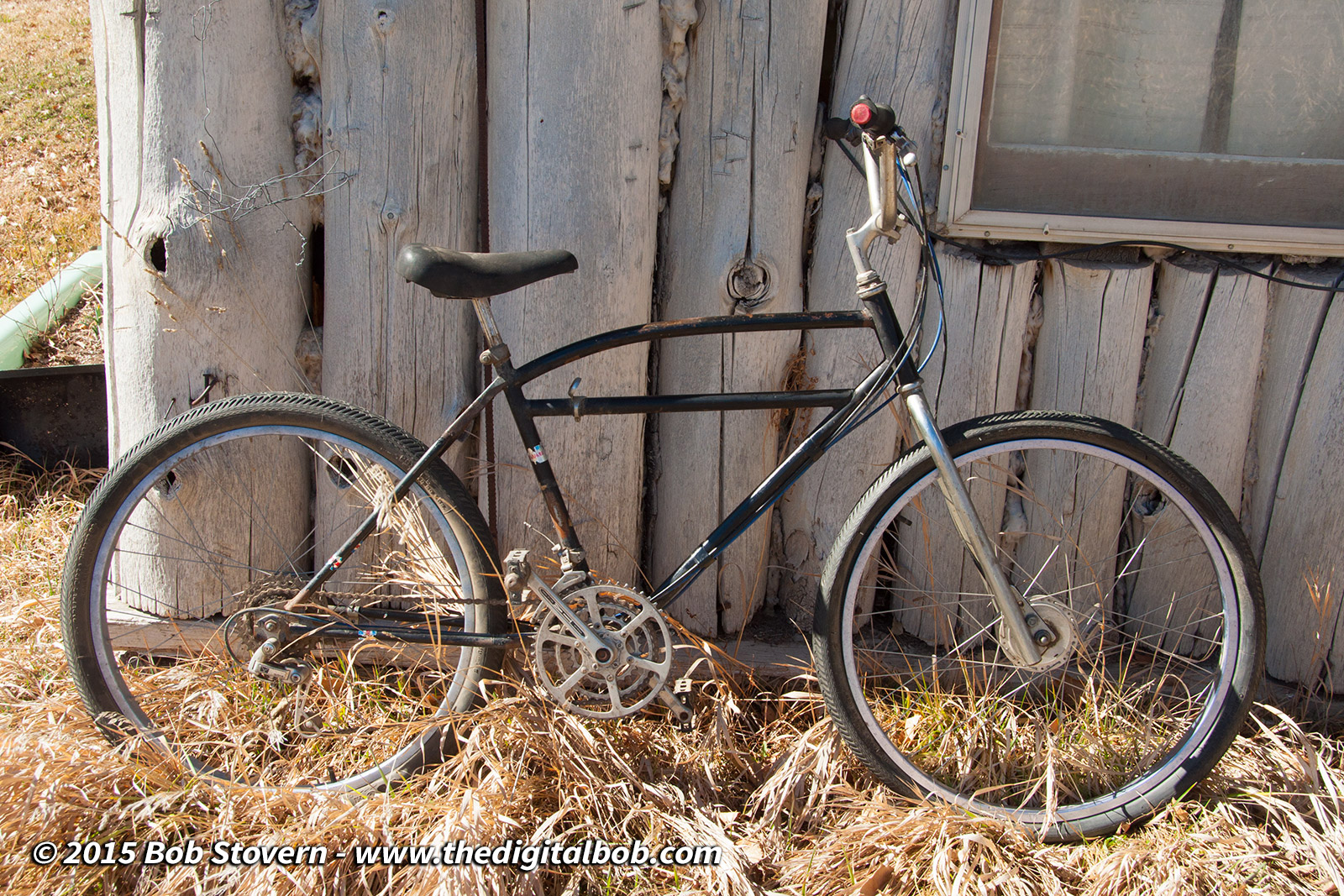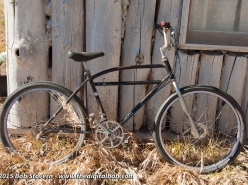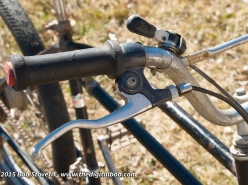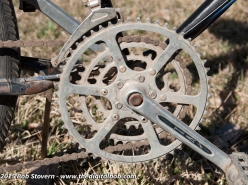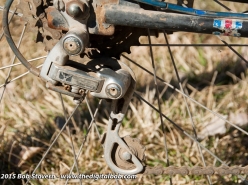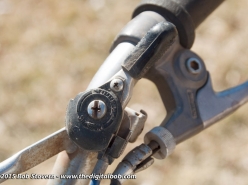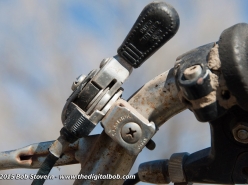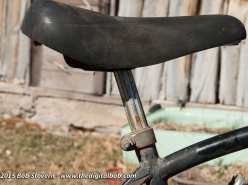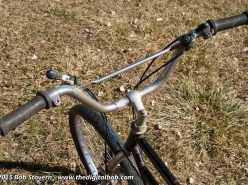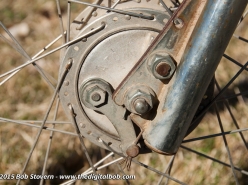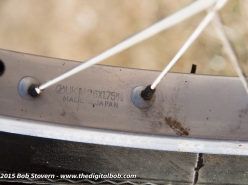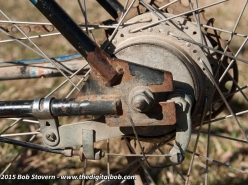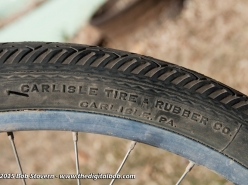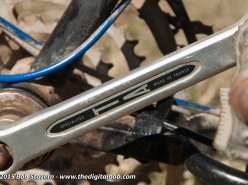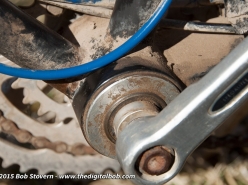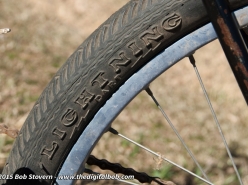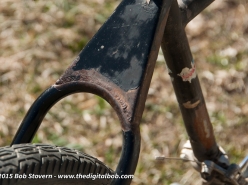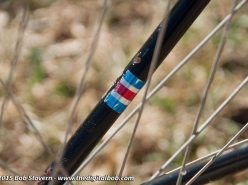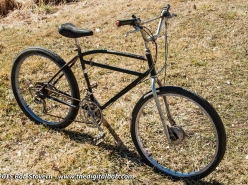What kind of bicycle is that?
It’s a mountain bicycle.
Who made it?
I did.
Wow, I’ve never seen one before.
The first mountain bikes most people saw and rode were from Specialized, Diamondback or some other bicycle manufacturer mass-producing them during the 1980’s. If you were living in Marin County during the late 1970’s and you were lucky enough to know Joe Breeze and Charlie Kelly you could have bribed them into selling you one of the earliest custom mountain bikes. An unshaven Gary Fisher or Tom Ritchey might have been hanging around the shop the day you picked it up. What if you didn’t have access to bicycles like that and you wanted to pedal up and fly down the mountain in front of you? You’re standing in Crested Butte, Colorado and your wild side wants to ride up over the 12,700 ft (3870m) pass to Aspen and drink a few beers in the bar. What would you do?
Off-road bicycles have been around as long as bicycles. My first off-road ride probably happened seconds after my first on-road ride. So your initial experiment is spontaneous; point and ride with whatever you have with two wheels. You quickly find out that your BMX bike is too small for adventures more than a mile or two from home. Your ten speed racer rolls farther, but it’s far too fragile and those skinny tires only work on the smoothest routes. Neither is going to get you up or down that mountain without a lot of walking. The cruiser bicycle is a two wheel tank with a low center of gravity. It bounces over rocks and the balloon tires have the traction for cornering in loose dirt, but it only solves half the problem. You are still pushing it up the hills – and breaking parts on the way down because you can’t slow it down reliably with only the rear coaster brake. If you want to ride up and down through streams and over rocks everyday, you are going to have to build your own.
The broken parts from your last clunker ride go directly into the trash can, but that long, sturdy frame is a good starting point. Tandem hubs, wheels and cranks are twice as strong so you grab those from the parts bin. You liberate shifters and derailleurs from your ten speed that is rusting behind the garage. Bars and grips might be donated by a moto friend or you might try BMX parts to add bling and keep the weight down. The result is a custom design that meets all the requirements for a modern mountain bicycle. Lots of gear choices so you can pedal up and down. Strong wheels and reliable brakes which help avoid mid-flight breakups and unplanned tree hugging. Serious pedal mashing will not bend or break your cranks as you wind it up to warp speed. Wide bars give you plenty of leverage to drift washboard corners during bone rattling descents. Success! The beer in Aspen tastes better than you could have imagined.
I didn’t build the bike on this page, but I imagine that is what it might have been like to do it back then. My first visit to Crested Butte was in 1987 so I was about a decade late to the party. I discovered this bicycle in my current neighborhood just a few months ago. While complimenting the bull moose bars on a friend’s vintage Specialized bicycle he said, “I have an older one out back.” I didn’t hesitate to take a look. I was immediately impressed by the stout build and couldn’t help noticing a few key details: wide rims, wide handlebars, and a low center of gravity. These are three items that most people look for while shopping for a mountain bike today. An eager salesperson today might explain how these are new improvements, but one look at this bike shatters that myth. We now embrace much of what the early mountain bike pioneers discovered on their own almost forty years ago. They didn’t have space-age technologies and computers, but they still built functional mountain bikes that filled their teeth with bugs and dirt from smiling so wide.
I wanted to interview the builder of this bike, but sadly he is no longer with us. Who is he? He is a mountain biker. May this brief article honor his efforts. The rider may be forgotten as the years pass, but the bike lives on. Will your bike be around after nearly forty years? What kind of mountain bikes will people be riding in the year 2055? This bicycle makes me want to pull on a pair of tube socks, grab an old football helmet and see what’s on tap at the Hotel Jerome. Seriously, fresh tires and tubes are the only thing keeping it from the trails. If that happens, I promise there will be video.
GEOMETRY & SPECIFICATIONS
Head Angle: 70 degrees
Seat Angle: 73 degrees
Top Tube: 22″ (559mm)
Seat Tube: 19″ (482mm)
Standover: 30″ (762mm)
Chainstay Length: 19″ (482mm)
BB Height Estimate: 11″ (279mm)
Wheelbase: 44.25″ (1124mm)

